Contraception
Plan B and the implantation of a human embryo

Emergency contraception popularly known as Plan B is sold online and on shelves over the counter in the United States without age restrictions. The intended purpose of Plan B is to reduce the chance of pregnancy after unprotected sex or contraceptive failure. Although Plan B is not an abortion pill, it sometimes can act as an abortifacient harming an existing pregnancy.
The following article by Dr. Donna Harrison presents an excellent detailed explanation of how plan B can kill embryos.
Some researchers and others have claimed categorically that Plan B — a high dose of Levonorgestrel — has no effect on human embryos. Media outlets in recent days have echoed these claims. The research studies, however, don’t support that conclusion.
Numerous studies and reviews published over the last 20 years have shed light on the nine critical steps from fertilization to a successful pregnancy that proceeds to term:
Step 1: At the beginning of a woman’s cycle, a new batch of eggs starts to mature in a woman’s ovary.
Step 4: The woman’s ovary releases an egg, which must be fertilized within 24 hours or else is incapable of fertilization.
Step 5: An embryo is formed at fertilization (sperm penetrates egg).
Step 6: The embryo travels to the endometrial cavity.
Step 7: The embryo implants in the lining of the uterus (implantation).
Step 8: Biochemical “crosstalk” between the embryo and the mother establishes a nutrient supply to the embryo. This crosstalk requires progesterone before, during, and after implantation.
Step 9: The mother misses her period and gets a positive urine pregnancy test.
Currently the term “contraceptive” is used loosely to describe drugs or devices that interfere with one or more of the steps from 1 through 8. Interfering with pregnancy after step nine is termed an “abortion.”
Step 2: The woman’s brain (specifically, the pituitary gland) sends a signal to her ovaries to cause the eggs in the batch to grow, and one will mature more than the others.
Step 3: The pituitary sends a big signal — a surge of luteinizing hormones, called the “LH surge” — to tell the ovary to get ready to release that one matured egg. That surge allows the egg to be released within the next 24 hours. The LH surge also causes the place where the egg was released from, the corpus luteum, to produce another hormone, progesterone, which later enables the embryo to survive.
Since human life begins at fertilization, however, the ethical controversy is not about the words “contraceptive” or “abortifacient” but rather about whether drugs and devices can interfere with steps 6 through 8: That is, can they end a human life that has already begun?
How Plan B works depends on what step a woman is at in her cycle. If she takes Plan B when she is at step 1, nothing happens.
If she takes Plan B at step 2, her brain will not produce enough of an LH surge for her to release an egg. Many studies show that if LNG (Plan B) is taken four to two days before a woman is due to release an egg, then Plan B can delay ovulation for several days or prevent ovulation altogether (see here, here, and here). If this were the only way in which Plan B worked, there would be no ethical concern about embryos: With no egg released, there would be no embryo formed.
If she takes Plan B at any one of the steps from 4 through 9, then there is good evidence that the high dose of LNG in Plan B EC is not effective in preventing pregnancy (see here). There is also evidence that taking this high dose after ovulation (actually after the LH surge that occurs the day before egg release) neither prevents implantation nor disrupts an embryo that already implanted (see here). That raises a concern about effectiveness, but not about ethics.
This is the heart of the problem. If LNG is given one to two days before the egg is due to be released, then egg release is not reliably prevented (see here, here, and here). In fact, in several studies of women who received LNG as an emergency contraceptive during the time immediately before ovulation, ovulations were documented but no pregnancies occurred (see here and here).
One study reports that “when [a high dose of LNG] was given in the fertile window, breakthrough ovulations occurred 62 out of 87 times (71%)” (see here.)
That means that 71 percent of the time when women took LNG shortly before their egg release was due to happen, the women released eggs. This led the authors to conclude: “FR (follicular rupture or ovulation) occurred in some two-thirds of women taking [a high dose of LNG] preovulatory; this suggests that other mechanism than suppression of ovulation prevents pregnancy in these women.”
The authors recognized, that is, that an egg was released but no pregnancy occurred.
What happened? Several important studies help answer this question. When ovulation does occur after LNG has been given, most of those ovulations show luteal-phase defect (see here, here, here, here, here, and here).
That’s the term for when the ovary does not produce enough progesterone to allow the embryo to survive. If the LH surge is blunted — that’s an interference at step 3, above – then the ovary will release the egg, which can be fertilized but not produce enough progesterone for steps 6, 7, and 8. So, the embryo formed would not survive long enough to produce a positive pregnancy test. And interference with the LH surge is precisely how Plan B works.
So, in summary:
If Plan B is taken five to two days before egg release is due to happen, the interference with the LH signal prevents a woman from releasing an egg, no fertilization happens, and no embryo is formed.
Current studies do not demonstrate a harmful effect on the embryo if Plan B is taken after egg release.
Many authors focus on these two facts to make the sweeping claim that Plan B has no effect on a human embryo. What they are forgetting is Plan B’s effect at step 3, the two-day window in which embryos can form but positive pregnancy tests don’t occur. That’s the window during which the studies mentioned above suggest that Plan B has a likely embryocidal effect in stopping pregnancy.
That two-day window is a problem for people who care about the youngest human life. And it’s why the many confident assertions in the media that Plan B acts only to prevent conception, and never to kill embryos, are misguided.
The Connection Between Birth Control and Breast Cancer
http://www.womenofgrace.com/en-us/media/tv/default.aspx#s_1666_1
Dr. Angela Lanfranchi
The guest for this Women of Grace series maintains that thousands of women’s lives are lost annually because of scientific dishonesty and political correctness.
A bold statement to be sure, but one for which she has the evidence. What that evidence is and why you should be concerned about it is the subject of this Women of Grace series.
The Contraception-Divorce Connection
“…what God has joined together, no human being must separate.” Mk 10: 9
The Bible Says
“But from the beginning of creation, ‘God made them male and female. For this reason a man shall leave his father and mother [and be joined to his wife], and the two shall become one flesh.’ So they are no longer two but one flesh. Therefore what God has joined together, no human being must separate.” Mk 10:7-9
Jesus spoke these words in response to the Pharisees’ questions about divorce—in particular Moses’ allowance of a decree of divorce. The 40-50% divorce rate in the USA indicates that Jesus’ teaching that “no human being must separate” husband and wife is largely ignored.
“God created mankind in his image; in the image of God he created them; male and female he created them. God blessed them and God said to them: Be fertile and multiply; fill the earth and subdue it.” Gen 1: 27-28
“Let the children come to me. Do not prevent them.” Mk 10:14
The joining of love and life in marital sexual intercourse—the marriage act—is a second God-ordained joining not intended for Man to separate by contraception.
Divorce & Contraception Violate God’s Plan
US Catholics divorce and contracept at about the same rate as non-Catholics. Annulment application is commonly offered in response to divorce. For most Catholics, their teaching on contraception has been nil. It is estimated that 60-90% of annulments world-wide are granted in the USA. Also studies indicate that almost all Catholic couples contracept before and during some part of their marriage.
The enclosed Total Fertility & Divorce Rates chart demonstrates a strong correlation between family size and divorce. Why did family size begin a steep decline in the mid-1800s? Andrea Tone, in Devices and Desires, A History of Contraceptives in America, describes how Charles Goodyear’s 1839 invention of rubber vulcanization transformed a small but thriving side-line to sausage making into a lucrative condom manufacturing industry that continues into the 21st Century. Contraceptive use is the only feasible explanation for the rapid decline in Total Fertility Rates (TFRs) during the 19th and 20th Centuries. Note that TFRs dropped by almost half in each Century, and they have hovered a little below 2 during the 21st Century.
The Pill Effect
The Divorce Rate increased 2.5 times following wide acceptance of the Birth Control Pill in the early 1960s. No-fault divorce laws and legalized abortion were further consequences of over 10 million women being on the BCP and millions more continuing to use barrier and other means to limit child-bearing.
Marital Sexual Intercourse
In God’s first words to us, He commanded us to “be fruitful, multiply and fill the earth”—a single command stated three times. He must have thought it pretty important. In humility and trust, He surrendered to His creatures the duty and power to initiate a new human life, while retaining His right to allow that initial effort to succeed. We call that sacred act of initiation “marital sexual intercourse”.
The “marital” adjective is important because it sets marriage as the legitimate condition for use of sexual intercourse. This is based on marital sexual intercourse’s essential purpose to populate Earth and Heaven—its procreative purpose. To guarantee that we would engage in marital sexual intercourse, God added a unitive second dimension by making marital sexual intercourse delightful, enjoyable, exciting and mysterious. The unifying dimension cleverly encourages the marital sexual intercourse-performing couple to stay together for their continuing pleasure AND for mutual support in raising their children—and also God’s. Thus a family is formed!!
Why Marriage
Marriage publicly identifies the family as an institution formed by a man and woman engaging in sexual intercourse, and children that result from their union. Thus marital sexual intercourse is referred to as the “marriage act” or the “procreation act”—recognizing its essential and unique purpose of creating new human life with God. It is these procreative and unitive ends that “God has joined together [and] no human being must separate”.
Why is this so?
If the act which is primarily intended for procreation is counterfeited (neutered) by contraception, the act cannot achieve its intended and natural purposes—neither procreative nor unitive. A holy act has been hollowed out and made intrinsically evil. It should be expected that contraceptive-using-couples will feel dissatisfied, incomplete and expectant of something more. That missing more may be sought in another relationship, pornography, or other addictions. The stage is thus set for divorce.
Conclusion
The cultural chaos caused by divorce is due in large part to the effect of contraception on marriage. Separating the unitive and procreative ends of sexual intercourse redefines and destabilizes marriage. In God’s perfect plan for us, there would be no contraception, the average family would include many children, and divorce would be rare.
Has there ever been a time in history (or a culture) when both contraception and divorce were absent? What was that society like? Can a contraceptive and divorce free society be created? Can we humbly set aside our plan, and accept God’s plan for love, marriage, sex and children?
Conclusions Suggested by the Chart:
1. The “natural” Total Fertility Rate (TFR) may be as high as 7. With limited availability of contraception, the average American woman of the early 1800s birthed 7 children. Is that what God planned for average family size? The corresponding “natural” divorce rate is essentially zero.
2. The vulcanization of rubber by Charles Goodyear in 1839 jump-started the contraceptives industry with condoms and diaphragms. As contraceptives began to be readily available in the mid-1800s, TFRs rapidly declined.
3. The low TFRs during WWII (1941-1945) were followed by a jump in TFRs as millions of soldiers returned to marry and start families in 1945-1960. High divorce rates during and after WWII may be a result of long separations and mental and physical health problems of returning soldiers.
4. The advent of the Birth Control Pill (BCP) in the early 1960s and the universal acceptance of all forms of birth control soon fixed TFRs at about 2 (or less) for the 40+ years from 1970 to 2014. Divorce rates increase as TFRs decrease.
5. Rapid acceptance of the BCP in the 1960s corresponds with divorce rates more than doubling in 10 years.
6. While TFRs have held steady near 2 for the past 40 years, divorce rates have steadily declined to 1960’s levels possibly due to slow economic growth, fewer marriages reducing the pool of potential divorces, and aging couples’ greater tolerance of a less than ideal marriage.
7. Contraceptive use destabilizes and redefines marriage.
Source fertility rate data: http://www.gapminder.org/data
Source divorce rate data: U.S. Census Bureau: Statistical Abstract of the United States for 2001 (Table 117), available online at www.census.gov/prod/www/abs/statab.html; Current Population Report for 2000 (Table 3), available online at www.census.gov/cps; Centers for Disease Control and Prevention: “Births, Marriages, Divorces, and Deaths: Provisional Data” for 2000 (in National Vital Statistics Report 49) and 2009 (in NVS Report 58) (Table 2), available online at www.cdc.gov/nchs/products/nvsr.htm
Ver en español aquí
Sterilization Reversal Book 2013 Edition
The Theme of the Book
Sterilization Reversal – A Generous Act of Love is a compilation of 20 stories of couples who were sterilized and then sought sterilization reversal. It is the first book that discusses, from a Roman Catholic perspective, the destructive impact that sterilization has on marriage and the joyous spiritual and marital renewal experienced by couples after reversal. As such, Sterilization Reversal – A Generous Act of Love is a unique resource for clergy, religious educators and laypeople. It is an especially useful tool for the pastoral counseling of persons who have repented their sterilization. It is also a particularly effective means of informing people who are considering sterilization of the emptiness and heartbreak that often follow as well as the NFP alternative that nourishes the marital relationship rather than attacks it. (more…)
Homosexual Marriage: We Have Sown The Wind, And Now Reap The Whirlwind.
 by Msgr. Charles Pope
by Msgr. Charles Pope
Homosexual Marriage Is The Logical Conclusion For A Culture That Celebrates Sterility! Widespread Acceptance of the Homosexual Lifestyle Is God’s Punishment for Sin!
There is, among faithful Catholics, a dismay, and even an understandable anger at the events unfolding at the Supreme Court these past days related to gay unions. And even if the court were to uphold traditional marriage (which does not seem likely), or merely return the matter to the States, it seems quite clear where our culture is going regarding this matter, approving things once, not so long ago, considered unthinkable.
What then to do with our dismay and anger? It is too easy to vent anger, which is not only unproductive, but in the current state of “hyper-tolerance” for all things gay, angry denunciations are counter-productive. (more…)
“I am the bread of life.” TWO EUCHARISTIC MIRACLES COMPARED
Dear friends who usually get my homilies: I am sending
along a homily from my friend, young Father Jeffrey Montz.
He was ordained a priest a year ago, and is now the Parochial
Vicar at St. Frances of Assisi [New Orleans]. Perhaps, as
moving as the homily is Fr. Jeff’s note to me which I have
copied and attached to the end of the homily.
Here is Fr. Jeff’s Homily: In the year 2009, I was distributing
communion to the faithful when a young woman approached
and extended her hands to receive the Eucharist. Almost as
soon as I had placed the Host in her hands, she began moving
away and in the process she dropped the host. Standing over the
fallen Host lying on the ground, a slight giggle, shrug of the
shoulders, and re-extended hands, her body language said to
me, “Ooops, I dropped it. Can you give me another one?” (more…)
The Perfect Storm : Homily by Father Thomas Dufner
Homily by: Father Thomas Dufner.
July 22, 2012
Epiphany Church
Coon Rapids, Minnesota, USA
Outline:
- Jeremiah says, “Woe to the Shepherds who mislead and scatter the flock of my pasture.”
- In the last few weeks we’ve heard the true role of the prophet to lead and guide the people
- There were many false prophets who served only themselves.
- Typically, the true prophets faced opposition because their message was unpopular.
- From Amos to Ezekiel, and from Jeremia and John the Baptist, they spoke the truths that God wanted them to speak, popular or unpopular, welcome or unwelcome. They served the Lord.
Vasectomy Safe and Simple?
 by
by
Liliana Cote de Bejarano, MD, MPH
About 1.5 million couples in the United States opt for sterilization every year .1 According to the Guttmacher Institute, 9.9% of couples in the US use vasectomy as a contraceptive method, and more than 500,000 vasectomies are performed in the United States every year.2 The medical community and most family planning advocates consider vasectomy safe and simple. This pamphlet provides current research on vasectomy that indicates the procedure has a number of short- and long-term complications and is not a healthy choice.
What is required for fertilization?
Homilies from Called to Give Life
Homilies from Called to Give Life
Here are sixteen homilies dealing with morality for married couples and with contraception in particular. They are offered here for the use of priests and others who might find them useful. The printable version of the homilies (see above) can be opened in Microsoft Word and saved or edited from there. For those who do not have Word, the html text on this page can be copied and pasted into any word processor.
Additional homilies can be found on the God’s Plan For Life website on the homily page. That site also offers other important pro-life resources.
The Catholic Hospital Chapel
Health Care for the Whole Person
Wednesday was a five hundred mile day with a brief stop in Pendleton in the middle of the drive. The trip took me to Saint Anthony Hospital for the blessing of a new addition to the hospital which includes a lovely, conveniently located prayer chapel. In reality the Chapel at Saint Anthony Hospital is more than a prayer chapel. It is a Presence Chapel, a Consolation Chapel, a Peace Chapel, a Hope Chapel, a Grief Chapel, a Healing Chapel. There a person encounters more than his or her own thoughts. There one encounters the living Presence of Christ Himself. There, in the Presence of Him who is the source of consolation, peace, hope, and proper healing, one encounters thoughts which are beyond one’s own. There one comes face to face with the Reality of all realities, the true, living and eternal God. Many hospitals have a chapel but only Catholic Hospitals have a chapel with a Presence. Catholic Hospitals are therefore different and the difference does not end at the chapel. (more…)
The Bible vs Contraception
What does the Bible say about contraception?
The Second Vatican Councils statement on Divine Revelation teaches us that interpretation of the Sacred Scriptures must devote attention to “the content and unity of the whole of scripture, taking into account the tradition of the entire Church”1 Much more than a moral manual or a doctrinal concordance, the Bible is an inspired expression of the faith and life of the Church. In contrast to the legalism of the Pharisees, the revelation of Christ was/is comprehensive, describing the positive fulfillment of the demands of love. Our application of this revelation to the specific moral questions of our age, in this case contraception, involves submitting our actions to the standard of life-giving love established by God, both in his fathering of the chosen people of old, and in his redemption of the New Israel. (more…)
Study: Abortion, Contraception Raise Breast Cancer Risk
Study is 9 months old, but still no warnings from cancer establishment
Contact: Karen Malec, Coalition on Abortion/Breast Cancer, 847-421-4000
MEDIA ADVISORY, Jan. 6 /Christian Newswire/ — Less than two months since the U.S. Preventative Services Task Force issued new guidelines recommending against routine mammograms for women in their forties, a second breast cancer scandal involving a U.S. government panel of experts has come to light which has implications for healthcare reform.
An April 2009 study by Jessica Dolle et al. of the Fred Hutchinson Cancer Research Center examining the relationship between oral contraceptives (OCs) and triple-negative breast cancer (TNBC) in women under age 45 contained an admission from U.S. National Cancer Institute (NCI) researcher Louise Brinton and her colleagues (including Janet Daling) that abortion raises breast cancer risk by 40%. [1]
Additionally, Dolle’s team showed that women who start OCs before age 18 multiply their risk of TNBC by 3.7 times and recent users of OCs within the last one to five years multiply their risk by 4.2 times. TNBC is an aggressive form of breast cancer associated with high mortality. (more…)
Women at High Risk of Significant Bone Loss on Injectable Birth Control Identified
ScienceDaily (Dec. 22, 2009) — Nearly half of women using depot medroxyprogesterone acetate (DMPA), commonly known as the birth control shot, will experience high bone mineral density (BMD) loss in the hip or lower spine within two years of beginning the contraceptive, according to researchers at the University of Texas Medical Branch at Galveston.
The study, reported in the January 2010 issue of Obstetrics and Gynecology, was the first to show that women on DMPA who smoke, have low levels of calcium intake and never gave birth are at the highest risk for BMD loss. The researchers also found that high risk women continued to experience significant losses in BMD during the third year of DMPA use, especially in the hip — the most common facture site in elderly women.
DMPA is an injected contraceptive administered to patients every three months. According to the American College of Obstetricians and Gynecologists, more than two million American women use DMPA, including approximately 400,000 teens. DMPA is relatively inexpensive compared with some other forms of birth control, has a low failure rate and doesn’t need to be administered daily, which contributes to the contraceptive’s popularity. (more…)
What a Woman Should Know about Birth Control
According to the National Survey of Family Growth, between the years 2017-2019, there were 72.7 million women of reproductive age (15–49) using contraception in the United States. The same source reported that oral contraceptive pills were used by over 15 million women. Over 30 million women used other birth control methods, and almost 26 million of these were either sterilized or living with a sterilized man. Long-acting reversible contraception (including the intrauterine device and the Implant) was used by more than 11 million women. Other widely used methods of birth control included condoms (nearly 9 million women), contraceptive injections (2 million), and withdrawal (4 million).1
The Pill consists of one or more types of artificial hormones called estrogens and progestins. It works by inhibiting ovulation and sperm transport and by changing the lining of the inside of a woman’s uterus (called the endometrium) so that implantation of a newly conceived embryo is unlikely.
Ethical Concerns: When the Pill works by preventing implantation of a recently conceived embryo, it produces an early abortion.2
Medical side effects: In 2005, the World Health Organization officially classified oral contraceptives as Group I carcinogens (Group I being the most dangerous from Groups I-IV).3 A year later, a comprehensive meta-analysis published in the Mayo Clinic Proceedings, noted that 21 out of 23 studies found an increased risk of developing premenopausal breast cancer in women who had taken the Pill prior to the birth of their first child. Overall this group of women experienced a 44% increased risk in developing breast cancer prior to age 50.4 Other side effects that women have experienced include high blood pressure, blood clots, strokes, heart attacks, depression, weight gain, and migraines.5 Although the Pill decreases the risk of ovarian and uterine cancer, it increases the risk of breast, liver and cervical cancer.6 At least three studies have noted that the AIDS virus is transmitted more easily to women who are taking the Pill if their partner(s) have the AIDS virus.7,8,9
“The Shot”
Commonly known as “the Shot,” Depo-Provera, a long acting progestin hormone, is injected into a woman’s muscle every three months. It works by decreasing ovulation, by inhibiting sperm transport and by changing the lining of a woman’s uterus.10
Ethical concerns: By changing the lining of the uterus, Depo-Provera can cause an early abortion when conception does occur.
Medical side effects: The results of two major world studies have shown that women who take Depo-Provera for two years or more before age 25 have at least a 190% increased risk of developing breast cancer.11 In addition, Depo-Provera may reduce a woman’s bone density,12 and worsen her cholesterol level.13 One study found that women who had received injectable progestins (i.e., usually Depo-Provera or norethisterone enanthate) for at least five years suffered a 430% increased risk of developing cervical cancer.14 Several studies have shown that women who receive injectable progestins have a much higher rate of contracting the AIDS virus if their partner is infected, with one study showing a 240% increased risk.15
Other Hormonal Contraceptives
The same artificial hormones used in the Pill and Depo-Provera are packaged in a variety of other delivery systems: the Patch, the “Morning after Pill,” hormone impregnated IUDs and vaginal inserts, and others. More are in development. Most are so new that their side effects have not been well researched. They use similar hormones as in the Pill and can be expected to have generally the same cancer-producing risks.
Barrier Methods: The Condom and the Diaphragm
The condom and diaphragm are latex devices used to prevent sperm from reaching the ovum, thus preventing fertilization.
Medical side effects: The condom has a failure rate for avoiding pregnancy that is estimated to be between 10-30%.16, 17 There are several reasons: breakage or slippage during use, manufacturing defects, and defects caused by shipping and storage in a hot or very cold place. A comprehensive review of condom effectiveness in preventing sexually transmitted diseases, sponsored by the US National Institutes of Health, published in 2001, concluded that use of condoms reduces, but does not eliminate transmission of the AIDS virus to men and women and of gonorrhea to men. The review also concluded that condoms have no proven effectiveness in reducing the transmission of any other STD.18 At least one study has noted that women who use barrier methods such as the diaphragm or condom, or the withdrawal method, had a 137% increased risk of developing preeclampsia.19 Preeclampsia, a complication occurring in some pregnant women, is a syndrome of high blood pressure, fluid retention, and kidney damage, which may eventually lead to prolonged seizures and/or coma. It is theorized that exposure to the male’s semen plays a protective role against preeclampsia.
Spermicides
A spermicide is an agent that is designed to kill the man’s sperm and is often sold as a gel or as an ingredient in the vaginal sponge.
Medical side effects: Toxic Shock Syndrome has been associated with the spermicide sponge.20 One researcher has noted that couples who have used certain spermicides within a month of conception have experienced a doubling in the rate of birth defects, as well as a doubling of the rate of miscarriage.21
The IUD (Intrauterine Device)
This is a T-shaped device made of hard plastic. It may also contain copper or progestin hormones. A doctor inserts it into a woman’s uterus. It works by irritating the lining of the uterus and obstructing sperm transport.
Ethical concerns: When conception occurs with an IUD in place, the IUD can prevent implantation, thus causing an early abortion.22
Medical side effects: These include uterine perforation, which may lead to a hysterectomy, and infections, such as a pelvic or tubo-ovarian abscess. Use of all IUDs has been associated with an increased incidence of PID (Pelvic Inflammatory Disease).23 The use of IUDs have been associated with actinomycosis, an infection that can cause long term complications such as pelvic mass and infertility.24 The IUD may occasionally result in pregnancy and if this were to occur, an ectopic pregnancy would be more likely to occur. An ectopic pregnancy is one in which the unborn child implants himself/ herself in a location other than in the mother’s uterus, usually in the Fallopian tube. According to Rossing and Daling, two prominent researchers, women who had used an IUD for three or more years were more than twice as likely to have a tubal pregnancy as women who had never used an IUD, even years after the IUD had been removed.25 Ectopic pregnancy remains the leading cause of maternal death in the United States. The IUD may also cause back aches, cramping, dyspareunia (painful intercourse), dysmenorrhea (painful menstrual cycles), and infertility. 23
“Permanent” Sterilization: Tubal Ligation and Vasectomy
Surgical sterilization attempts to achieve permanent sterility by cutting, burning or tying a woman’s Fallopian tubes (called “tubal ligation”) or a man’s vas deferens (called “vasectomy”). Essure was a permanent non-surgical type of sterilization. Inserts placed in the Fallopian tubes caused a tissue barrier to form that prevented sperm from reaching the egg.
Medical side effects: Tubal ligation does not always prevent conception. When conception does occur, it is associated with a much higher incidence of ectopic pregnancy,26 which, is, as was noted, the leading cause of death in pregnant women. In addition, women who undergo the procedure may experience complications from the anesthesia or from surgery. Complications include bladder puncture, bleeding, and even cardiac arrest after inflation of the abdomen with carbon dioxide.27 Some women who have undergone a tubal ligation experience a syndrome of intermittent vaginal bleeding associated with severe cramping pain in the lower abdomen.28 Essure was discontinued in 2018 due to several adverse events including, perforation of the uterus, improper placement, pain, infection, and nickel allergy.29
About 50% of men who undergo a vasectomy will develop anti-sperm antibodies. In essence, their bodies will come to recognize their own sperm as “the enemy.” This could lead to a higher incidence of autoimmune disease. Several studies have noted that men who undergo a vasectomy have a higher incidence of developing prostate cancer, especially 15-20 years after their vasectomy.30 31,32,33,34 One recent study found an association between vasectomy and aggressive prostate cancer.35 Vasectomy has also been associated with a rare type of dementia.36
Wise Options
The best option before marriage is abstinence. The obvious benefits include greater self-respect, freedom from the risk of sexually transmitted disease, as well as monetary savings and no chance of an unintended pregnancy. Within marriage it should be noted that an openness towards having children yields specific medical benefits. Every additional child a woman bears reduces her risk of breast cancer and ovarian cancer by 5-10%. In addition, breast and ovarian cancer risks are reduced significantly in women who breast feed, with highest reductions in those women who breast-fed for the longest time intervals.37
NFP: Natural Family Planning
Natural Family Planning is a totally natural method by which couples can manage their fertility. In NFP a woman determines when she is either fertile or infertile by observing the consistency of her cervical mucus or other biomarkers such as her temperature. The largest trial to date (about 20,000 Indian women)—sponsored by the WHO (World Health Organization)—found an unintended pregnancy rate of less than 0.2%.38
One obvious benefit of NFP is that there is no increased risk of cancer or other diseases as opposed to hormonal contraceptives. Couples who use NFP have a divorce rate that is less than 5%39—far lower than the national rate of about 50%.
Buy it now:
What a Woman Should Know about Birth Control « One More Soul
REFERENCES:
1. Current Contraceptive Status Among Women Aged 15–49: United States, 2017–2019
Retrieved from: NCHS Data Brief, Number 288, October 2020 (cdc.gov)
2. Larimore WL, Stanford JB. Postfertilization effects of oral contraceptives and their relationship to informed consent. Arch Fam Med. 2000; 9: 126–133.
3. International Agency for Research on Cancer. Combined estrogen-progestogen contraceptives and combined estrogen-progestogen menopausal therapy. IARC Monographs on the Evaluation of Carcinogenic Risks to Humans. 2007; Vol 91. available at http://monographs.iarc.fr/ENG/Monographs/vol91/mono91-6E.pdf
4. Kahlenborn C, et al. Oral contraceptive use as a risk factor for premenopausal breast cancer: A meta-analysis. Mayo Clin Proc. 2006 Oct; 81(10): 1290-1302.
5. Kahlenborn C. Breast Cancer, Its Link to Abortion and the Birth Control Pill. Dayton, OH: One More Soul; 2000; 229-231.
6. For overall cancer risk from several cancers due to oral contraceptive use: Kahlenborn C. Breast Cancer, Its Link to Abortion and the Birth Control Pill. Dayton, OH: One More Soul; 2000: 228-229.
7. Allen S, et al. Human immunodeficiency virus infection in urban Rwanda. JAMA. 1991; 266: 1657-1663.
8. Simonsen JN, et al. HIV infection among lower socioeconomic strata prostitutes in Nairobi. AIDS. 1990; Feb: 139-144.
9. Mali JKG, et al. Contraceptive use and the risk of HIV infection in Nairobi, Kenya. Inter J Gynaecol Obstet. 1995; 48(1): 61-67.
10. The Society of Obstetricians and Gynaecologists of Canada. Injection (Depo-Provera). retrieved from http://www.sexualityandu.ca/professionals/contraception-1-3.aspx September 27, 2008.
11. Skegg DCG, et al. Depot medroxyprogesterone acetate and breast cancer: a pooled analysis of the World Health Organization and New Zealand studies. JAMA. 1995; 273(10): 799-804.
12. Wooltorton E. Medroxyprogesterone acetate (Depo-Provera) and bone mineral density loss. CMAJ. 2005; 172(6): 746.
13. Mia AR, et al. Effects of prolonged use of injectable hormonal contraceptive on serum lipid profile. Mymensingh Med J. 2005 Jan; 14(1): 19-21.
14. Herrero R, et al. Injectable contraceptives and risk of invasive cervical cancer: evidence of an association. Int J Cancer. 1990; 46(1): 5-7.
15. Crook AM, Ford D, Gafos M, Hayes R, Kamali A, Kapiga S, et al. Injectable and oral contraceptives and risk of HIV acquisition in women: an analysis of data from the MDP301 trial. Hum Reprod. 2014 Aug; 29(8): 1810-1817.
16. Collart D. Biochemistry & Molecular Biology. Condom failure for protection from sexual transmission of the HIV-a review of the medical literature. 1993, 5393 Whitney Ct., Stone Mountain, GA 30088.
17. Rahwan R. Chemical Contraceptives, Interceptives and Abortifacients. 1995. College of Pharmacy, Ohio State University.
18. National Institute of Allergy and Infectious Diseases. Scientific Evidence on Condom Effectiveness for Sexually Transmitted Disease (STD) Prevention [workshop June 2000], Summary report of the National Institute of Allergy and Infectious Diseases, NIH. DHHS. July 20, 2001.
19. Klonoff-Cohen HS, et al. An epidemiologic study of contraception and preeclampsia. JAMA. 1989 Dec; 262(22): 3143-3147.
20. Faich G, et al. Toxic shock syndrome and the vaginal contraceptive sponge. JAMA. 1986 Jan; 255: 216-218.
21. Jick H, et al. Vaginal spermicides and congenital disorders. JAMA. 1981 Apr; 245(13): 1329-1332.
22. Stanford J MD MSPH. Mechanism of action of intrauterine devices: Update and estimation of post-fertilization effects. Am J Obstet Gynecol. December 2002; 187(6).
23. Bayer HealthCare Pharmaceuticals Inc. Mirena. retrieved from http://www.drugs.com/pro/mirena.html September 27, 2008 and Bayer HealthCare Pharmaceuticals Inc. Paragard. retrieved from http://www.drugs.com/pro/paragard.html September 27, 2008
24. Pillai M, Van de Venne M, Shefras J. Serious morbidity with long-term IUD retention. J Fam Plann Reprod Health Care. 2009 Apr; 35(2): 131-2.
25. Daling J, et al. Past use of an intrauterine device and risk of tubal pregnancy. Epidemiology. 1994; 5:129-130.
26. Gaeta TJ, et al. Atypical ectopic pregnancy. Am J Emerg Med. 1993 May; 11(3): 233-234.
27. Dunn HP. Unexpected Sequelae of Sterilization. International Review of Natural Family Planning, 1:4 (Winter 1977) 318.
28. Townsend DE, et al. Post-ablation-tubal sterilization syndrome. Obstet Gynecol. 1993; 82: 422-424.
29. Essure Permanent Birth Control. Retrieved from: Essure Permanent Birth Control | FDA
30. Rosenberg L, et al. Vasectomy and the risk of prostate cancer. Am J Epidemiol. 1990; 132(6): 1051-1055.
31. Giovannucci E, et al. A prospective cohort study of vasectomy and prostate cancer in US men. JAMA. 1993 Feb; 269(7): 873-877.
32. Giovannucci E, et al. A retrospective cohort study of vasectomy and prostate cancer in US men. JAMA. 1993 Feb; 269: 878-882.
33. Hayes RB, et al. Vasectomy and prostate cancer in US Blacks and Whites. Am J Epidemiol. 1993; 137: 263-269.
34. Rosenberg L, et al. Vasectomy and the risk of prostate cancer. Am J Epidemiol. 1990; 132: 1051-1055.
35. Siddiqui MM, Wilson KM, Epstein MM, Rider JR, Martin NE, Stampfer MJ, et al. Vasectomy and Risk of Aggressive Prostate Cancer: A 24-Year Follow-Up Study. J Clin Oncol. 2014 Jul 7.
36. Weintraub S, Fahey C, Johnson N, Mesulam MM, Gitelman DR, Weitner BB, Rademaker A. Cogn Behav Neurol. Dec 2006; 19(4); 190-3.
37. Kahlenborn C. Breast Cancer, Its Link to Abortion and the Birth Control Pill. Dayton, OH: One More Soul; 2000: 12, 226.
38. Ryder RE. “Natural Family Planning”: Effective birth control supported by the Catholic Church. BMJ. 1993; 307: 723-726.
39. Kippley JF, Kippley SK. The Art of Natural Family Planning (Fourth Edition). The Couple to Couple League. 2007; 245.
A Woman’s Story of Her Husband’s Vasectomy & Reversal
The personal testimony of Kim, a wife and mother of five…
Ten years ago my husband had a vasectomy after the birth of our fifth child. I pleaded with him not to do it, and the kids and I went away for the weekend while his brother took him to the appointment. That day is etched in my mind forever. I relive it often and especially when the kids reach a milestone such as graduating from school or getting their drivers license, etc. The journey has taken me down many different roads as I tried to replace the loss of my fertility. I exercised incessantly to make sure that I was always attractive and in good shape, I bordered on anorexia as my vanity took over. I lost my zeal for the Church and my vocation as a mother. I lost trust in my husband’s decisions for the family, but all the while I never expressed my heartache because the vasectomy changed my husband in many ways as well. He became very focused on his work, his career advancement and the money that he could make under the guise of “providing” for the family. He continued to seek his own will and not that of God in his decisions, and I felt afraid of the control that he had over me. In hindsight, taking away someone’s fertility against their will is one of the most controlling things that anyone can do. I vacillated between hope and despair because I knew the Church’s teaching about married love and the sacrament of marriage, and I wished with my entire being that my husband could love me like “Christ loved the Church.” (more…)
The connection between contraception and abortion
Many in the pro-life movement are reluctant to make a connection between contraception and abortion. They insist that these are two very different acts–that there is all the difference in the world between contraception, which prevents a life from coming to be and abortion, which takes a life that has already begun.
With some contraceptives there is not only a link with abortion, there is an identity. Some contraceptives are abortifacients; they work by causing early term abortions. The IUD seems to prevent a fertilized egg–a new little human being- from implanting in the uterine wall. The pill does not always stop ovulation, but sometimes prevents implantation of the growing embryo. And, of course, the new RU-486 pill works altogether by aborting a new fetus, a new baby. Although some in the pro-life movement occasionally speak out against the contraceptives that are abortifacients, most generally steer clear of the issue of contraception. (more…)
Breast Cancer Risk from Abortion
How could abortion cause breast cancer?
At the beginning of pregnancy there are great increases in certain hormone levels (e.g., estrogen, progesterone, and hCG) that support pregnancy. In response to these changes, breast cells divide and mature into cells able to produce milk. Abortion causes an abrupt fall in hormone levels, leaving the breast cells in an immature state. These immature cells can more easily become cancer cells.1
Has this been proven? (more…)
Breast Cancer, Abortion, and the Pill
For the past year, One More Soul has been privileged to work with Dr. Chris Kahlenborn in publishing his new book: Breast Cancer, Its Link to Abortion and the Birth Control Pill . This book is the culmination of seven years the author spent reviewing and analyzing more than 500 research studies and related works. It is very timely because of the breast cancer epidemic, which currently threatens every woman.
In the concluding chapter of Dr. Kahlenborn’s book, he summarizes his conclusions and provides recommendations for action. The substance of that chapter is presented here, modified slightly to improve readability as a separate article. (more…)
The Hurtful Consequences of Artificial Contraception and Sterilization: Three Personal Testimonies
Rick and Peggy
In 1971, my husband and I were married. Thinking birth control must be okay because no one had said anything against it during my high school years and I had never heard a homily addressing the issue, I made an appointment with my family doctor. I asked if I needed to be on a stronger birth control pill, since now I would be taking it for the purpose of birth control instead of acne. He prescribed the pill and off I went.
We used contraceptives for the next three years. Our lives became very selfish and self-centered, as they caused us to become very empty and lonely. We thought, “There is more to life than this.” We had a strong yearning to have a baby and thought this was the right time. (more…)
Dear Rick: A personal letter to my husband, lover, and best friend
Dear Rick,
If someone would ask me, “How’s your love-life?” I would say, “Beautiful, Awesome and Wonderful!” But in the past I wasn’t always able to say those words.
When we used contraceptives the first few years of our marriage, I felt an emptiness. Something was missing! I felt used! Remember when I would share with you how I couldn’t feel close to you, but I didn’t know why I felt this way!
We felt an emptiness and wanted to have children. So I stopped taking the birth control pills, but couldn’t conceive. The birth control pills had been a detriment to my physical health and the doctor told us surgery was necessary to resolve the problem they had caused. (more…)
Dear John: A Personal Letter to my Husband, Lover, and Best Friend
Dear John,
Almost 22 years ago we took an oath before God, family and friends to lovingly accept children. This was a commitment we looked forward to, but it was also a concern because I have diabetes.
In ten years of marriage, God blessed us with three beautiful children, but all were very complicated pregnancies with toxemia and uncontrollable blood sugars. Through it all, you were my strength – even during the cesarean births, you stood by my side. (more…)
The Challenge of Contraception for those who respect life
Contraception poses a challenge to those who respect life. It may not be immediately obvious that there is any connection between contraception and abortion, but on further examination, a relationship between the two becomes apparent. Ignoring the issue of contraception leads to a lost opportunity to respect life to the fullest degree. There are at least three connections between contraception and abortion to consider:
1. Many contraceptives can directly cause early abortions.
2. Contraceptive use creates a perceived need for abortion as a “back-up.”
3. Contraceptive use causes a devaluation of human life.
We’ll explore each of these ideas in the sections that follow. (more…)
Contraception: Why Not – Testimonials
This article contains testimonials from people who heard Dr. Smith’s lecture “Contraception: Why Not” and were powerfully touched.
Discontinuing Contraceptives – One Pharmacist’s Insights
A growing number of pharmacists are choosing to discontinue dispensing contraceptives. Driving this decision is an increasing awareness of the negative consequences for users of oral contraceptives. For example, all pill package inserts clearly state that one of the actions of the pill is alteration of the uterine lining which interferes with nidation or implantation.[1] The insert for LO/OVRAL of Wyeth Labs reads: “Clinical Pharmacology: Combination oral contraceptives act by … alterations [to the] endometrium (which reduce the likelihood of implantation).”[2] This is clearly an abortifacient mechanism rather than a contraceptive one. Conception (or fertilization) and the beginning development of a new human being would have already occurred at least a week to ten days before.[3, 4] (more…)
The Harms of Contraception
There are several reasons why we believe that the use of contraception harms everyone involved. The first reason is that the use of contraception leads to abortion. Several “contraceptives” are in fact abortifacients. That is, they cause early abortions. All oral contraceptives, Norplant, Depo-Provera, and IUDs cause abortions before a woman even knows she’s pregnant. According to Dr. Bogomir Kuhar, in Infant Homicides Through Contraceptives, these forms of birth control take an estimated 8.1 to 12.75 million lives each year in the US alone. Contraceptives also cause abortions through their failures. All contraceptives fail, some quite often. Even surgical sterilization has a failure rate. Each “failure” results in a new human life, a new baby, an actual woman facing an unplanned and often unwanted pregnancy. These pregnancies are at risk for abortion. (more…)
A Physicians Pro-Life Journey
Dear Steve,
After speaking with you earlier today, I had a chance to go to the web site you told me about.* I was excited to see the reference to the book [Physicians Healed]. I wonder how his homily impacted those who were there that day!?
I also had a chance to think about how my decision on contraception was influenced by the “Spirituality in Medicine” weekend (retreat) I attended in January. I do remember a point that really hit home when the speaker, Fr. Miles Sheehan, MD, S.J., was speaking about obedience. He was making the point that 2000 years of the Churchs teaching might have more wisdom than my 30 something years of life experience. Even if one doesnt fully comprehend the reasons behind the teaching, there is still a place for obedience; then here I was with plenty of understanding and lots of reasons to follow the teachings on contraception! What was I waiting for!? (more…)
How the Pill and Other Contraceptives Work
The birth control pill is currently being used by more than 10 million women in the US.1 A number of physicians and researchers have claimed that the birth control pill (BCP) (also called an oral contraceptive) is actually an abortifacient. An abortifacient is a substance that causes an abortion, the death of the zygote, embryo or fetus after conception has occurred. Others do not believe the BCP is an abortifacient as noted in a 1998 publication authored by several physicians: Hormonal Contraceptives: Are they Abortifacients? 2
This booklet uses an easy-reading question and answer format to review the available evidence for determining how the BCP works. All of that evidence, whether microscopic, macroscopic, or immunological, indicates that the BCP sometimes causes an early abortion. When and how often this happens remain unknown. (more…)
The Bible versus Contraception
What does the Bible say about contraception?
The Second Vatican Council’s statement on Divine Revelation teaches us that interpretation of the Sacred Scriptures must devote attention to “the content and unity of the whole of scripture, taking into account the tradition of the entire Church…”1 Much more than a moral manual or a doctrinal concordance, the Bible is an inspired expression of the faith and life of the Church. In contrast to the legalism of the Pharisees, the revelation of Christ was/is comprehensive, describing the positive fulfillment of the demands of love. Our application of this revelation to the specific moral questions of our age, in this case contraception, involves submitting our actions to the standard of life-giving love established by God, both in his fathering of the chosen people of old, and in his redemption of the New Israel.
The morality of contraception must be viewed in this light, that is, in the light of God’s ineffable love for human life and his plan for its transmission. Looking to the Bible for guidance on the issue of contraception must consider the Bible’s revelation of the sovereignty of God over creation and His plan for marriage. It must also recognize that Scripture reveals children as the supreme gift of marriage and a blessing from God.
Subverting the sovereignty of God: the deliberate act of rendering a sexual act infertile.
Genesis 38:8-10
The Bible contains teachings relevant to contraception on a variety of levels. The most direct of these references is Genesis 38:8-10, the Onan Incident:
Then Judah said to Onan, “Go in to your brother’s wife, and perform your duty as a brother-in-law to her, and raise up offspring for your brother.” And Onan knew that the offspring would not be his; so it came about that when he went in to his brother’s wife, he wasted his seed on the ground, in order not to give offspring to his brother. But what he did was displeasing in the sight of the Lord, so He took his life also.
Though God was certainly displeased with Onan’s disobedience to the Levirate Law: that is, the obligation of a man to sow children with his dead brother’s widow, his punishment for Onan far exceeded the penalty mandated for such a crime. According to Deuteronomy 25:5-10, the penalty is for the slighted widow to publicly humiliate the offender. God’s enactment of the death penalty for Onan indicates a heightened seriousness in the offense. The only additional element to Onan’s refusal to provide offspring is his choice to make the sexual act deliberately infertile by withdrawal.
That Onan’s punishment was due to his use of contraception is pointed out by Pope Pius XI in his encyclical Casti Connubii:
Small wonder, therefore, if Holy Writ bears witness that the Divine Majesty regards with greatest detestation this horrible crime [contraception] and at times has punished it with death. As St. Augustine notes, ‘Intercourse even with one’s legitimate wife is unlawful and wicked where the conception of the offspring is prevented. Onan, the son of Judah, did this and the Lord killed him for it’ (55).
Even the most notable Protestant theologians agree on this point. Martin Luther, for example, equates Onan’s action with sodomy:
Onan must have been a malicious and incorrigible scoundrel. This is a most disgraceful sin…We call it unchastity, yes, a Sodomitic sin. For Onan goes in to her; that is, he lies with her and copulates, and when it comes to the point of insemination, spills the semen, lest the woman conceive. Surely at such a time the order of nature established by God in procreation should be followed (Commentary on Genesis 38: 8-10).2
Likewise, John Calvin, founder of Calvinism and other sects of Calvinist extraction such as Presbyterians and the United Church of Christ, calls Onan’s withdrawal “monstrous”:
Besides, he [Onan] not only defrauded his brother of the right due him, but also preferred his semen to putrify on the ground, rather than to beget a son in his brother’s name. The voluntary spilling of semen outside intercourse between man and woman is a monstrous thing. Deliberately to withdraw from coitus in order that semen may fall on the ground is doubly monstrous (Commentary on Genesis 38: 8-10).3
Offspring are the supreme gift of marriage, a blessing from God through which God is revealed to the world.
Genesis 1:27-28
“God created man in his image, in the divine image he created him; male and female he created them. God blessed them, saying: ‘Be fruitful and multiply; fill the earth and subdue it.'”
Genesis 9:1
“God blessed Noah and his sons and said to them: ‘Be fertile and multiply and fill the earth.'”
Guadium et Spes, the Second Vatican Council’s Pastoral Constitution on the Church in the Modern World, discusses God’s primordial plan for marriage and its natural openness to fertility:
Children are the supreme gift of marriage and contribute greatly to the good of the parents themselves. God himself said: ‘It is not good that man should be alone,’ and ‘from the beginning [he] made them male and female’; wishing to associate them in a special way in his own creative work, God blessed man and woman with the words: ‘Be fruitful and multiply.’ Hence, true married love and the whole structure of family life which results from it, without diminishment of the other ends of marriage, are directed to disposing the spouses to cooperate valiantly with the love of the Creator and Savior, who through them will increase and enrich his family from day to day (no. 50).
Endowed with the gift and responsibility to participate in God’s redemption of humanity, the married couple perpetuates and projects the image and likeness of God in its transmission of life. In his explanation of the vows of Catholic marriage and the question as to whether the new couple will accept children from the Lord, Pope John Paul II teaches:
“When the Church asks ‘Are you willing?’ she is reminding the bride and groom that they stand before the creative power of God. They are called to become parents, to cooperate with the Creator in giving life. Cooperating with God to call new human beings into existence means contributing to the transmission of that divine image and likeness of which everyone ‘born of a woman’ is a bearer.”4
The procreation of children is a further revelation of the image and likeness of God in that it creates a communion of persons, a family, which signifies the communion of persons essential to Christ. “The Christian family is a communion of persons, a sign and image of the communion of the Father and the Son in the Holy Spirit. In the procreation and education of children it reflects the Father’s work of creation” (CCC 2205).
Malachi 2:14-15
“…the Lord is witness between you and the wife of your youth, with whom you have broken faith though she is your companion, your betrothed wife. Did he not make one being, with flesh and spirit: and what does that one require but godly offspring?”
While this verse occurs in the context of a discourse on the infidelity of God’s people to the covenant wherein idolatry is likened to adultery, the point still holds. The analogy would make no sense if offspring were not customarily considered a necessary good of marriage. In other words, it is clear that offspring were considered the natural sign of a one-flesh union.
Catechism Connection: Children Are a Blessing from God
“Sacred Scripture and the Church’s traditional practice see in large families a sign of God’s blessing and the parents’ generosity.” Catechism of the Catholic Church, 2373
Psalm 127:3-5
“Behold sons are a gift from the Lord; the fruit of the womb is a reward. Like arrows in the hand of a warrior are the sons of one’s youth. Happy the man whose quiver is filled with them; they shall not be put to shame when they contend with the enemies at the gate.”
Psalm 128:1-4
“Happy are those who fear the Lord, who walk in his ways! For you shall eat the fruit of your handiwork; happy shall you be, and favored. Your wife shall be like a fruitful vine in the recesses of your home; your children like olive plants around your table. Behold, thus is the man blessed who fears the Lord.”
Exodus 23:25-26
“The Lord, your God, you shall worship; then I will bless your food and drink, and I will remove all sickness from your midst; no woman in your land will be barren or miscarry; and I will give you a full span of life.”
Deuteronomy 7:13-14
“As your reward for heeding these decrees and observing them carefully, the Lord, your God, will keep with you the merciful covenant which he promised on oath to your fathers. He will love and bless and multiply you; he will bless the fruit of your womb.. You will be blessed above all peoples; no man or woman among you shall be childless..”
Not only do these passages portray children as a natural blessing but as a transcendent blessing for fidelity to the covenant. As such, they are the best of what God offers for they are not just the natural reward of a well-ordered life but a divine premium that comes from the inner life of God. Before we receive them, they exist in the mind of God, worthy of his forethought and of his love. The Psalmist says, “Truly you have formed my inmost being; you knit me in my mother’s womb” (Ps 139:13). How could we view children as anything but precious gifts into which God pours his very being-gifts that come from His heart to be received with awe and gratitude?
For this reason “Sacred Scripture and the Church’s traditional practice see in large families a sign of God’s blessing and the parents’ generosity”(CCC 2373). Vatican II likewise teaches, “Among the married couples who thus fulfill their God-given mission, special mention should be made of those who after prudent reflection and joint decision courageously undertake the rearing of a large family” (GS 50).
1 Timothy 2:15
“She will be saved through childbearing, provided she continues in faith and love and holiness-her chastity being taken for granted.”
Here Paul proclaims the great dignity of the vocation of motherhood and its indispensable role in the plan of God for the salvation of parents. St. Paul, moreover, implies that the whole body of Christ benefits from cherishing the transmission of human life; for when a mother cooperates with God in the creation of new life and its Christian formation, she contributes to the building up of the Christian community. By definition, a vocation is a pathway of holiness that exists to fortify the Kingdom of God. Childbearing, depicted by Paul as a vocation, is no exception.
Chemical and hormonal means of contraception and abortion in the New Testament.
Galatians 5:19-20
“Now the works of the flesh are obvious: immorality, impurity, licentiousness, idolatry, sorcery, hatreds…those who do such things will not inherit the kingdom of God.”
Revelation 9:21
“Nor did they repent of their murders, their magic potions, their unchastity, or their robberies.”
Revelation 21:8
“But as for cowards, the unfaithful, the depraved, murderers, the unchaste, sorcerers, idol-worshipers, and deceivers of every sort, their lot is in the burning pool of fire and sulfur, which is the second death.”
Some scholars (cf Kimberly Hahn in Life-Giving Love5) hold that these New Testament words represent, in context, a stinging condemnation of contraception and chemical abortion. Usually translated as “sorcerer” and “sorcery,” they refer more specifically to a mixer of potions or to the potions themselves, medicines that were commonly directed at preventing fertility or at achieving abortion.
The Whole Picture
Putting the whole picture together, we start with God’s “first commandment” to “increase and multiply,” we browse through the Old Testament in which children are seen as some of the best blessings of God and even as a requirement for His people, and we finish with contraceptive practices being classed with “immorality, impurity, licentiousness, and idolatry” and also with “murders, unchastity, and robberies.”
As we try to put on the heart of God, as revealed in the Scriptures, one of the main themes we encounter is His overflowing love for human life and especially for children. The fierce condemnation of immorality and of contraception in particular appear to reflect God’s great desire that people enjoy the full joys and healing that come from loving family life and service to children.
What to do?
All of us are closely connected to people involved with contraception and many of us have used contraceptives or are still doing so. Many of us have been sterilized–the ultimate contraceptive. Knowing now how God approaches these matters, we have a great opportunity to help others to deeper life and to walk this way ourselves.
We are well aware of our weaknesses and others’ as well. The full, abundant life of God, however, is waiting for us and for those we love, provided we open ourselves to it. One important step is simply to talk about the situation, to God, to each other, to a confessor, to a godly friend. If additional information is needed, One More Soul6 has a wide range of teaching materials that can help, as well as recorded testimonies of couples who have struggled with this situation before. There are more people every day who have faced this crisis and come out healed. The possibilities are broad and full of hope.
NOTES:
1 Dei Verbum, no. 12.
2 Provan, Charles D. The Bible and Birth Control. Zimmer Printing. Monongahela, Pennsylvania: 1989, p. 81.
3 Ibid., p. 67.
4 Letter to Families from Pope John Paul II, no. 8.
5 Hahn, Kimberly, Life-Giving Love, Servant Publications, Ann Arbor, Michigan, 1999, p. 67.
6 One More Soul: www.OneMoreSoul.com, OMSoul@OneMoreSoul.com, 800-307-7685.
This pamphlet is drawn from Chapter 2 of Called to Give Life by Jason T. Adams. Jason Adams is a father of five and the Theology Chair at Guerin Catholic High School, Noblesville, Indiana. He serves as Outreach Associate for One More Soul, the publisher of Called to Give Life. He holds the degrees of Bachelor of Arts in Secondary Education from Purdue University, and Master of Arts in Theology and Christian Ministry from the Franciscan University of Steubenville. Jason and Linda have used Natural Family Planning to successfully postpone and achieve pregnancy throughout their marriage, and have shared their testimony to its benefits in Pre-Cana, RCIA, young adult/youth groups, and other venues.
Why Is Contraception Immoral?
 Too often the discussion of the morality of contraception fragments into a specific treatment of individual devices and methods wherein the overarching theological and philosophical essence of contraception is obfuscated. We lose sight of the forest for the trees. Behind every device and method of contraception is a fundamental breach of God’s design for marital sexuality. Without this perspective, the Church’s condemnation of contraception might appear to be a knee-jerk reaction to modernity or a rejection of science and man’s dominion over the material universe. The more we can recover the root of the Church’s prohibition of contraception, the more consistent and comprehensive will be our objections. (more…)
Too often the discussion of the morality of contraception fragments into a specific treatment of individual devices and methods wherein the overarching theological and philosophical essence of contraception is obfuscated. We lose sight of the forest for the trees. Behind every device and method of contraception is a fundamental breach of God’s design for marital sexuality. Without this perspective, the Church’s condemnation of contraception might appear to be a knee-jerk reaction to modernity or a rejection of science and man’s dominion over the material universe. The more we can recover the root of the Church’s prohibition of contraception, the more consistent and comprehensive will be our objections. (more…)
What About Birth Control?
Perhaps you would like to have (more) children some day, but not right away. Or perhaps you have serious reasons to avoid having (more) children. You will be facing a very important decision regarding family planning.
As your doctor, I feel it is my job to provide information that will help you make a wise choice that is best for you medically, emotionally, and spiritually. I take this responsibility very seriously.
Certainly, there are many artificial methods of birth control available. You may have experience with some already. Although I am qualified to prescribe birth control, I made a decision several years ago to stop prescribing or recommending these artificial methods. There are several reasons why, and I’d like to share some of them with you. (more…)
Getting Beyond “I Can’t”
We travel the entire United States of America proclaiming the Gospel of Life as it pertains to God’s plan for spousal love. This plan calls for a total gift of self to one’s spouse and the acceptance of her total gift of self in kind. Contraception makes such an unconditional gift impossible. Natural Family Planning fosters these values, and cooperates with them.
Everywhere we go we find married couples asking, “Why won’t our priests address the issue of contraception and sterilization from the pulpit?” Having heard these frustrated questions many times, we think it is time to list the top eight excuses given by priests and our answers to them: (more…)
Intrauterine Devices (IUD/IUS): What Every Woman Needs to Know
What is an IUD?
An Intrauterine Device (IUD) is a small object that is placed inside a woman’s uterus (womb) for the purpose of preventing or interrupting pregnancy.
Currently, there are two kinds of IUDs available in the United States: the Copper-T IUD, made from plastic and copper, and the Intrauterine System IUS, a plastic device that releases hormones.
Is an IUD 100% effective?
No. Thecopper-T IUD has a clinical pregnancy rate of less than 1 per 100 women each year,1 and the IUS has a rate of 0.2 per 100 women each year.2 (more…)
The Pill and Breast Cancer
1) How could the Pill cause breast cancer?
Two of the most important types of hormones that control reproduction are estrogens and progestins. Birth control pills are made from synthetic estrogens and/or progestins. Experiments have shown that these hormones cause women’s breast cells to divide more rapidly.1 Cells that divide more rapidly are more prone to develop into cancer cells.
2) What is the evidence that the Pill and breast cancer are connected?
In 2005, the World Health Organization classified oral contraceptives as a Group I carcinogen—the most dangerous classification known.2 Also, a comprehensive meta-analysis3 published in the Mayo Clinic Proceedings in October 2006 found that 21 out of 23 retrospective studies done since 1980 showed that women who took oral contraceptives prior to the birth of their first child sustained a 44% average increased risk of developing pre-menopausal breast cancer (see research chart inside). This risk rose to 52% for women who took the Pill for at least four years prior to the birth of their first child.
3) How serious of a problem is breast cancer?
El cáncer de seno es la segunda causa más común de muerte por cáncer en las mujeres en los Estados
Unidos. Cerca de una en cada ocho mujeres desarrollará el cáncer de seno en alguna época en
su vida. En los EE.UU. cerca de 287.850 mujeres son diagnosticadas anualmente con cancer de
seno invasivo. y más de 43.000 mueren de esta enfermedad.4 La mitad de las mujeres que desarrollan el cáncer de seno tienen 62 años de edad o menos cuando se les realiza el diagnostico. Este riesgo es aun más alto cuando es combinado con otros factores de riesgo del cáncer de seno como el aborto inducido, el tratamiento con hormonas (tal como remplazo de estrógeno), la historia familiar del cáncer de seno, y otros.
4) Do some contraceptives cause more risk than others?
Yes. Research studies show that breast cancer risk is almost tripled for women who used Depo-Provera for 3 years or more before age 25.5
5) Are other types of cancer affected by oral contraceptive pills?
Oral contraceptives decrease the risk of ovarian and uterine cancer, while they increase the risk of liver, cervical and breast cancer.6 Since breast cancer is far more prevalent than the other three types of gynecological cancers, the Pill’s overall effect is detrimental to women.
6) Are there other risks from contraceptives?
Yes. Well known side effects of the Pill include an increased frequency of blood clots, high blood pressure, and heart attacks, as well as migraines, depression, loss of libido, and a variety of other disorders. Less well known is that oral contraceptives and injectable progestins (such as Depo-Provera) significantly increase the risk of contracting and transmitting HIV (the AIDS virus).7,8 In addition, medical studies strongly suggest that oral contraceptives work at times by causing an early abortion.9
7) How can I protect myself?
Many of the known risk factors for breast cancer can be avoided, such as hormone exposure (including hormonal contraceptives), induced abortion, heavy alcohol use, obesity, and radiation exposure. In addition, there is a significant reduction of risk with each child a woman bears. Every month of breastfeeding reduces breast cancer risk, as does bearing a child at a younger age. Some medications (e.g., raloxifene), which are taken after menopause to help strengthen bones, have been shown to markedly reduce the risk of post-menopausal breast cancer and should be considered by all women at high risk.10
8) If hormonal contraceptives are so dangerous, what options do couples have?
Natural Family Planning (NFP) methods are available and do not require chemicals or surgery and cause no increase in breast cancer risk. Not to be confused with the “rhythm method,” NFP is based primarily on observations of a woman’s cervical mucus. One of the largest research studies of NFP (involving 19,843 women and performed in India by the World Health Organization) showed a pregnancy rate of 0.2 pregnancies per 100 women yearly.11
Natural Family Planning methods have been used to diagnose and treat a variety of female reproductive disorders including infertility. Various medical problems (e.g., excessive menstrual cramping and bleeding), which are sometimes treated with contraceptive hormones, can often be treated by giving magnesium/calcium supplements and ibuprofen products after the onset of menses.
9) How can I find out more about breast cancer risk from the Pill?
Anyone may download the entire Mayo Clinic meta-analysis article by going to The Polycarp Research Institute (TPRI): Oral Contraceptive Use as a Risk Factor for Premenopausal Breast Cancer (TPRI) .In addition, eleven of the seventeen chapters in the book Breast Cancer, Its Link to Abortion and the Birth Control Pill deal with cancer risks from birth control pills.6
10) Where can I find information about Natural Family Planning?
Natural Family Planning information is available from a number of national organizations:
Billings Ovulation Method Association
www.Boma-usa.org (651) 699-8139
Liga de Pareja a Pareja
www.ligadepareja.org (800) 214-6028
FertilityCare Centers of America
www.fertilitycare.org (402) 505-8917
Fundación Familia de las Americas
www.familyplanning.net (301) 627-3346
Marquette Institute for Natural Family Planning
www.mu.edu/nursing/natural-family-planning.php
Natural Family Planning International
www.NFPandmore.org
SymptoPro
www.symptopro.org (971) 280-9676
US Conference of Catholic Bishops
www.usccb.org (202) 541-3240
One More Soul (Un Alma Más)
www.OneMoreSoul.com (800) 307-7685
Many Catholic dioceses have NFP offices or Family Life offices that can supply NFP information. Local parishes and Catholic hospitals may also be good sources.
References
1. Anderson T, Battersby S, et al. Oral contraceptive use influences resting breast proliferation. Hum Pathol. 1989; 20: 1139-1144.
2. World Health Organization International Agency for Research on Cancer. IARC Monographs. July 29, 2005.
3. Kahlenborn C, Modugno FM, et al. Oral contraceptive use as a risk factor for premenopausal breast cancer: a meta-analysis. Mayo Clin Proc. 2006; 81(10): 1290-1302.
4. American Cancer Society. Key Statistics for Breast cancer. Last revised: January 12, 2022. Retrieved from Breast Cancer Statistics | How Common Is Breast Cancer
5. Skegg DCG, Noonan EA, et al. Depot medroxyprogesterone acetate and breast cancer [A pooled analysis of the World Health Organization and New Zealand studies]. JAMA. 1995: 799-804.
6. Kahlenborn C. Breast Cancer, Its Link to Abortion and the Birth Control Pill. One More Soul, Dayton, 2000. Can be read or downloaded at www.onemoresoul.com/featured/breast-cancer-its-link-to-abortion-and-the-birth-control-pill.html.
7. Ungchusak, et al. Determinants of HIV infection among female commercial sex workers in northern Thailand: results from a longitudinal study. J Ac Immune Defic Syn Hum Retro. 1996. 12: 500-507.
8. Mostad SB, et al. Hormonal contraception, vitamin A deficiency and other risk factors for shedding HIV-1 infected cells from the cervix and the vagina. The Lancet 1997. 350: 922-927
9. Larimore WL, Stanford J. Postfertilization effects of oral contraceptives and their relationship to informed consent. Arch Fam Med. 9; 2000: 126-133
10. National Cancer Institute. Study of Tamoxifen and raloxifene (STAR) trial. April 26, 2006. (www.cancer.gov/star)
11. Ryder RE. “Natural Family Planning”: Effective birth control supported by the Catholic Church. Brit Med J. 1993; 307: 723-726.
Dr. Chris Kahlenborn practices Internal Medicine in Camp Hill, Pennsylvania, and is the current president of the Polycarp Research Institute (www.polycarp.org). He is the author of Breast Cancer, Its Link to Abortion and the Birth Control Pill, on which this pamphlet is partially based. This book (BBCL) is available from One More Soul at (800) 307-7685 for a suggested donation of $9.95 for the soft cover edition and $12.95 for the hardback, and can be read at www.OMSoul.com.
Breast Cancer, Its Link to Abortion and the Birth Control Pill is available from One More Soul at (800) 307-7685 for a suggested donation of $5.95 for the soft cover edition and $13.95 for the hardback.
More resources from Dr. Kahlenborn available at One More Soul
Breast Cancer: Abortion and the Pill
This booklet presents the summary, conclusions, and recommendations from Chapter 17 of the book Breast Cancer, Its Link to Abortion and the Birth Control Pill. A great resource for explaining just how dangerous abortion and contraceptive pills are. KBCL $1.00
Breast Cancer Risk from Abortion
Information from the book Breast Cancer, Its Link to Abortion and the Birth Control Pill, presented in a short and highly persuasive format. We have received letters and phone calls about babies saved from abortion when their mothers read this pamphlet. PBCA $0.35
The “Morning After Pill” and other types of “Emergency Contraception” – Myths and Realities
What is “emergency contraception”?
“Emergency contraception” is the use of a drug or a device after intercourse to prevent pregnancy. Emergency contraception is promoted for use when a woman has been raped, when a couple has chosen to have intercourse without using any form of contra-ception, or when there is a suspected contraceptive failure. Types of emergency contraception include the Morning After Pill, the insertion of the copper-T Intrauterine Device (IUD) five to seven days after intercourse, or the use of the abortion drugs Danazol or Mifepristone (RU-486).
What is the “Morning After Pill”? (more…)
Problems associated with Hormonal Birth Control
Health Problems associated with
Hormonal Birth Control
by
Dr. Rebecca Peck
Dr. Benjamin Peck
Fr. Juan R. Vélez, former MD
Updated by Liliana Cote de Bejarano, MD, MPH
Oral birth control (and all other hormonal birth control—HBC) is typically used to prevent pregnancy but is sometimes prescribed for other medical conditions. HBC causes many potential adverse effects: medical, social and spiritual. The vast majority of HBC prescriptions are given by physicians to healthy women, including adolescents with no known disease. Some women are prescribed hormonal birth control for only one reason—to prevent the completely normal condition of pregnancy.
Since all medications have potentially unwanted side effects, some of them serious, it is important that a physician weigh the risks and benefits when prescribing any medication. It follows that it is unethical to expose healthy women to health risks in order to prevent a normal condition. The mistake of exposing women to these risks is quite grave since other methods of family planning exist, like Natural Family Planning (NFP), which have no side effects.
As physicians, we do not prescribe hormonal birth control. The medical reasons for this decision are as follows:
HBC Treats Women’s Fertility and
Childbearing as a Disease
Although there can be legitimate medical and personal reasons for avoiding pregnancy, female fertility and the possibility of pregnancy itself are not diseases, and therefore do not need a pill (or patch, shot, IUD) for “treatment.”
HBC Causes Abortion
When HBC fails to suppress ovulation and other mechanisms of action that impede fertilization in a sexually active woman, conception may occur. HBC interferes with the implantation of a new human being by reducing the thickness of the lining of the uterus and altering implantation molecules and factors.1
Typical low dose HBC formulations only prevent the release of the female egg in about 65-75% of cycles.2,3
For this reason, if a woman has intercourse in her fertile phase, pregnancy and subsequent chemical abortion is possible in approximately 30% of the cycles.
HBC Contributes to an
Anti-Life Mentality
HBC (whether the Pill, patch, IUD or Shot) underpins the practice of abortion. People unwittingly conclude: “If birth control fails, abortion is the solution.” A nation-wide survey indicated that 54% of the women who had an abortion were using birth control the month before.4
HBC Increases the Risk of
Breast Cancer
Women face an increased risk of developing breast cancer while taking HBC and for at least ten years after the use of HBC is stopped. According to a study published in The New England Journal of Medicine using hormonal contraception for 10 years increases the risk of breast cancer by 38%. Additionally, the study showed that IUDs that release hormones also increase the risk for breast cancer.5 If the Pill is taken for four years before a woman’s first pregnancy, there is a 52% increased risk of breast cancer.6 An analysis of multiple studies noted that 21 out of 23 retrospective studies showed an increased risk of premenopausal breast cancer in women who took oral contraceptives prior to the birth of their first child.7
HBC Increases the Risk of
Blood Clots
A study of 1524 patients in the Netherlands concluded that hormonal contraceptives increased the risk of venous thrombosis fivefold compared with non-use.8 The risk is highest for HBC-using women who are overweight, smoke or are over 35 years of age.9
A recent systematic review reported that the use of combined oral contraceptives increased the risk of venous thrombosis fourfold compared to women who never used oral contraceptives.10
HBC increases the Risk of Suicide and Causes Changes in Healthy Body Metabolism
The study of almost half a million Danish women (2017) followed on average of 8.3 years concluded
that there was almost a twofold increased risk of suicide attempts in women using HBC. Also, there was a threefold increase in the risk of suicide in women using HBC compared to women who never use contraception.11 A recent study reported that the use of oral, vaginal, or transdermal HBC induced an increase in markers of chronic inflammation, a risk factor for cardiovascular disease. The use of combined contraceptives also impairs insulin sensitivity in young healthy women, which is a risk factor for diabetes mellitus.12 Additionally, HBC can produce migraine headaches, weight increase, moodiness, and loss of libido. It contributes to early increased bone loss.13The use of HBC is associated with infertility after prolonged use, and even to some extent with short-term use.
HBC Increases the Incidence of
Reproductive Organ Cancer
The use of HBC is associated with a significant increase in cancer of the cervix.14 It is likely that this follows infection with Human Papilloma Virus (HPV) which is a sexually transmitted infection.
HBC Increases the Risk of
Liver Tumors
There is some evidence that oral birth control increases the risk of certain benign and malignant liver tumors.15
HBC Increases the Risk of
Heart Attacks
First and second-generation oral birth control formulations have been linked to an increased risk of heart attacks (myocardial infarctions) and ischemic strokes.16 Third-generation oral birth control pills are associated with an increased risk of ischemic stroke.17 A 2015 analysis of multiple studies showed that women using combined oral contraceptive pills have a 1.6-fold increased risk to suffer heart attack or stroke.18
Harmful Effects of HBC on
Marriage and Society
Hormonal birth control fosters the mentality that men and women are incapable of self-control and are thus not able to abstain from sexual intercourse. The introduction of HBC was the catalyst for the sexual revolution with dramatic increases in premarital sex, adultery, divorce, abortion, and out-of-wedlock births. HBC has played an indirect role in the dramatic increase in single-parent families, poverty, and associated social ills in the U.S.19,20
Natural Family Planning (NFP) is an excellent way to plan your family
NFP is free of harmful side effects to women and families, and when used for just and serious reasons, can be very good for married couples. 21
References
- Klipping, C., Duijkers, I., Fortier, M. P., Marr, J., Trummer, D., & Elliesen, J. (2012). Long-term tolerability of ethinylestradiol 20 mug/drospirenone 3 mg in a flexible extended regimen: Results from a randomised, controlled, multicentre study.The Journal of Family Planning and Reproductive Health Care, 38(2), 84-93. doi:10.1136/jfprhc-2011-100214 [doi]
- Chowdhury, V., Joshi, U. M., Gopalkrishna, K., Betrabet, S., Mehta, S., & Saxena, B. N. (1980). ‘Escape’ ovulation in women due to the missing of low dose combination oral contraceptive pills.Contraception, 22(3), 241-247. doi:S0010-7824(80)80003-5 [pii]
- Baerwald AR, et al. Effects of oral contraceptives administered at defined stages of ovarian follicular development. Fertil Steril. 2006 Jul; 86(1): 27-35. Epub 2006 Jun 9.
- Jones, RK ,et al. Contraceptive use among U.S. women having abortions in 2000-2001. Perspec Sex Reprod Health. 2002; 34(6): 294-303.
- Morch, L. S., Skovlund, C. W., Hannaford, P. C., Iversen, L., Fielding, S., & Lidegaard, O. (2017). Contemporary hormonal contraception and the risk of breast cancer.The New England Journal of Medicine, 377(23), 2228-2239. doi:10.1056/NEJMoa1700732 [doi]
- Kahlenborn C. Breast Cancer, Its Link to Abortion and the Birth Control Pill. 2000.
- Kahlenborn, C., Modugno, F., Potter, D. M., & Severs, W. B. (2006). Oral contraceptive use as a risk factor for premenopausal breast cancer: A meta-analysis.Mayo Clinic Proceedings, 81(10), 1290-1302. doi:S0025-6196(11)61152-X [pii]
- van Hylckama Vlieg, A., Helmerhorst, F. M., Vandenbroucke, J. P., Doggen, C. J., & Rosendaal, F. R. (2009). The venous thrombotic risk of oral contraceptives, effects of oestrogen dose and progestogen type: Results of the MEGA case-control study.BMJ (Clinical Research Ed.), 339, b2921. doi:10.1136/bmj.b2921 [doi]
- Poulter, N. R. (2000). Risk of fatal pulmonary embolism with oral contraceptives.Lancet (London, England), 355(9221), 2088-6736(00)02369-2. doi:S0140-6736(00)02369-2 [pii]
- de Bastos, M., Stegeman, B. H., Rosendaal, F. R., Van Hylckama Vlieg, A., Helmerhorst, F. M., Stijnen, T., & Dekkers, O. M. (2014). Combined oral contraceptives: Venous thrombosis.The Cochrane Database of Systematic Reviews, (3):CD010813. doi(3), CD010813. doi:10.1002/14651858.CD010813.pub2 [doi]
- Skovlund, C. W., Morch, L. S., Kessing, L. V., Lange, T., & Lidegaard, O. (2018). Association of hormonal contraception with suicide attempts and suicides.The American Journal of Psychiatry, 175(4), 336-342. doi:10.1176/appi.ajp.2017.17060616 [doi]
- Piltonen, T., Puurunen, J., Hedberg, P., Ruokonen, A., Mutt, S. J., Herzig, K. H.,…Tapanainen, J. S. (2012). Oral, transdermal and vaginal combined contraceptives induce an increase in markers of chronic inflammation and impair insulin sensitivity in young healthy normal-weight women: A randomized study. Human Reproduction (Oxford, England), 27(10), 3046-3056.
- Wooltorton, E. (2005). Medroxyprogesterone acetate (depo-provera) and bone mineral density loss.CMAJ : Canadian Medical Association Journal = Journal De l’Association Medicale Canadienne, 172(6), 746. doi:cmaj.050158 [pii]
- La Vecchia, C., & Boccia, S. (2014). Oral contraceptives, human papillomavirus and cervical cancer.European Journal of Cancer Prevention: The Official Journal of the European Cancer Prevention Organisation (ECP), 23(2), 110-112. doi:10.1097/CEJ.0000000000000000 [doi]
- Giannitrapani, L., Soresi, M., La Spada, E., Cervello, M., D’Alessandro, N., & Montalto, G. (2006). Sex hormones and risk of liver tumor.Annals of the New York Academy of Sciences, 1089, 228-236. doi:1089/1/228 [pii]
- Tanis, B. C., van den Bosch, M. A., Kemmeren, J. M., Cats, V. M., Helmerhorst, F. M., Algra, A., . . . Rosendaal, F. R. (2001). Oral contraceptives and the risk of myocardial infarction.The New England Journal of Medicine, 345(25), 1787-1793. doi:10.1056/NEJMoa003216 [doi]
- Baillargeon, J. P., McClish, D. K., Essah, P. A., & Nestler, J. E. (2005). Association between the current use of low-dose oral contraceptives and cardiovascular arterial disease: A meta-analysis.The Journal of Clinical Endocrinology and Metabolism, 90(7), 3863-3870. doi:jc.2004-1958 [pii]
- Roach, R. E., Helmerhorst, F. M., Lijfering, W. M., Stijnen, T., Algra, A., & Dekkers, O. M. (2015). Combined oral contraceptives: The risk of myocardial infarction and ischemic stroke.The Cochrane Database of Systematic Reviews, (8):CD011054. doi(8), CD011054. doi:10.1002/14651858.CD011054.pub2 [doi]
- Akerlof, GA, et al. An analysis of out-of-wedlock childbearing in the United States. Q J Econ. 1996 May; 111(2):277-317.
- Akerlof, GA. Men without children. Econ J. 1998 Mar; 108(447): 287-309.
- Fehring, R. J. (2015). The influence of contraception, abortion, and natural family planning on divorce rates as found in the 2006-2010 national survey of family growth.The Linacre Quarterly, 82(3), 273-282. doi:10.1179/2050854915Y.0000000007 [doi]
Where can you learn more about
Natural Family Planning?
Billings Ovulation Method Association-USA
(888) 637-6371 www.Boma-usa.org
Couple to Couple League
(800) 745-8252 www.ccli.org
Family of the Americas Foundation
(800) 443-3395 www.familyplanning.net
FertilityCare Centers of America
(402) 390-6600, ext. 117 www.fertilitycare.org
Marquette Model
(414) 288-3854 www.NFP.Marquette.edu
Natural Family Planning International
(361-384-0067) www.NFPandmore.org
Northwest Family Services
(503) 215-6377 www.nwfs.org
US Conference of Catholic Bishops
(202) 541-3240 www.usccb.org
One More Soul
(800) 307-7685 www.OneMoreSoul.com

Problems Associated with Hormonal Birth Control
Four physicians who do not prescribe hormonal birth control give medical reasons for this decision.
Perceiving the Contraception Connection
This homily (slightly abridged) was given on January 17, 1999 at the Cathedral of SS. Peter and Paul, Providence RI
Reading — John 1: 29-34
As he stood on one of the banks of the Jordan River that day, he was surrounded by many people: people from Jerusalem, people from the countryside of Judea — they came to him in huge numbers. Of course, that was not unusual. In fact, Scripture indicates that it was always that way for John the Baptist. He truly was a charismatic personality, a man who could draw a crowd and then hold them spellbound by his teaching and preaching—because he spoke the truth with such clarity and conviction. We’re told that even some of those who hated him, like King Herod, were “captivated by his words.” (more…)
Female Sterilization
What Every Woman Should Know about
-Tubal Ligation
-Sterilization by Tubal Inserts
-Sterilization Reversal
What is female sterilization?
Female sterilization means making a woman permanently infertile, usually by cutting, tying, or blocking her fallopian tubes.
What are the fallopian tubes?
The fallopian tubes are two organs situated sideways in the lower abdomen attached to the uterus. They conduct the ovum from the ovaries toward the uterus and also nurture the ovum and the sperm. If fertilization occurs, the fallopian tubes nurture and transport the human embryo to the uterus.
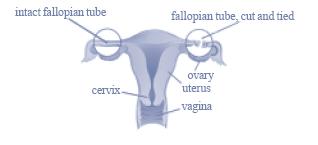
What is tubal ligation?
Tubal ligation involves closing off the fallopian tubes by cutting, burning, tying, or fastening a clip (or a combination of these methods) to cause permanent sterility (infertility). It is a surgical procedure carried out under anesthesia.
Two common surgical procedures for getting one’s “tubes tied” are:
Laparoscopy: Usually small incisions are made in the lower abdomen. Carbon dioxide gas is pumped in to inflate the abdomen, and a fiber-optic light is inserted. Then, surgical instruments are insertedto cut, tie, or burn the fallopian tubes.
Mini-laparotomy: This procedure requires a small incision in the lower abdomen. The fallopian tubes are closed by clips, burned, or cut and tied.
What is non-surgical sterilization?
There is a new non-surgical method of permanent female sterilization. In a procedure called hysteroscopy, micro-inserts are passed through the vagina, cervix, and uterus, and placed in the fallopian tubes. The micro-inserts cause a tissue barrier to form that prevents sperm from reaching the egg.
Does female sterilization have health risks?
Risks from anesthesia and surgery
- Infection1
- Bleeding2
- Respiratory problems
- Adverse effects from anesthetics
- Damage to abdominal organs3
- Bowel perforation4
- Death
Risks from tubal ligation itself
- Menstrual disorders5
- Ovary dysfunction6
- Ectopic pregnancy7
- Remorse8
Long-term psychological effects such as depression and anxiety have been reported by women after tubal ligation.9 Stress interfering with sex has been reported in women after tubal ligation.10 The probability of undergoing hysterectomy within 14 years after sterilization is 17% per 100 procedures.11
Is sterilization 100% effective?
NO. Failure rates can range from 1% for laparoscopic sterilization up to 13% for hysteroscopic sterilization.12 When pregnancy occurs after a female sterilization procedure the risk for ectopic pregnancy is 7.3 per 1000 procedures and can be higher for the newest procedures.
Warning! Sterilization does not protect against
sexually transmitted diseases including AIDS.
What if I change my mind?
Many sterilized women later desire to have their fertility restored. Some have entered new relationships and want a child with their new partner; some want a return to physical wholeness; some believe that they have done something immoral and are seeking spiritual restoration. There are, however, significant obstacles to sterilization reversal; for example, the surgery is more extensive and expensive than the original procedure, and it is typically not covered by insurance. Also, a return of fertility is not guaranteed; the success rate varies depending on a woman’s age, the type of sterilization performed, and the skill of the surgeon.
Is sterilization morally acceptable?
Before 1930 no Christian church accepted sterilization or any form of contraception. The Catholic Church and some Protestant churches still teach that intentional sterilization is an immoral form of birth control.
What are my options?
If you are married, the modern methods of Natural Family Planning (NFP) are the safest, healthiest, and least expensive alternatives for family planning.
If you are single, abstinence is the best option and always works!
References
1. Levgur M, Duvivier R. Pelvic inflammatory disease after tubal sterilization: a review. ObstetGynecol Surv. 2000 Jan; 55(1): 41-50.
2. Magos A, Chapman L. Hysteroscopic tubal sterilization. Obstet Gynecol Clin North Am. 2004 Sep; 31(3): 705-19, xii.
3. Moore CL, Vasquez NF, Lin H, Kaplan LJ. Major vascular injury after laparoscopic tuballigation. J Emerg Med. 2005 Jul; 29(1): 67-71.
4. Westhoff C, Davis A. Tubal sterilization: focus on the U.S. experience. Fertil Steril. 2000 May; 73(5): 913-922.
5. Timonen S, Tuominen J, Irjala K, Maenpaa J. Ovarian function and regulation of thehypothalamic-pituitary-ovarian axis after tubal sterilization. J Reprod Med. 2002 Feb; 47(2): 131-136.
6. Holt VL, Cushing-Haugen KL, Daling JR. Oral contraceptives, tubal sterilization, and functional ovarian cyst risk. Obstet Gynecol. 2003 Aug; 102(2): 252-258.
7. Jamieson DJ, Hillis SD, Duerr A, et al. Complications of interval laparoscopic tubal sterilization: Findings from the United States Collaborative Review of Sterilization. Obstet Gynecol. 2000; 96: 997–1002.
8. Kelekci S, Erdemoglu E, Kutluk S, Yilmaz B, Savan K. Risk factors for tubal ligation: regret and psychological effects impact of Beck Depression Inventory. Contraception. 2005 Jun; 71(6): 417-420.
9. Luo L, Wu SZ, Zhu C, Fan Q, Liu K, Sun G. Psychological long-term effects of sterilization on anxiety and depression. Contraception. 1996 Dec; 54(6): 345-357.
10. Warehime MN, Bass L, Pedulla D. Effects of tubal ligation among American women. J Reprod Med. 2007 Apr; 52(4): 263-272.
11. Hillis, SD, Marchbanks, PA, Tylor, LR, Peterson, HB. Tubal sterilization and long-term risk of hysterectomy: Findings from the United States collaborative review of sterilization. The U.S. Collaborative Review of Sterilization Working Group. Obstetrics & Gynecology. 1997; 89(4): 609-614.
12. Gariepy A, Creinin M, Schwarz EB, Smith K. Reliabilityof laparoscopic compared to hysteroscopic sterilizationat 1 year: a decision analysis. Obstet Gynecol. 2011; 118: 273–9.
Where can I learn more about Natural Family Planning?
One More Soul (OMS) is a non-profit organization dedicated to spreading the truth about the blessings of children, the harms of contraception, the benefits of Natural Family Planning, and the virtue of chastity. We carry a wide variety of educational resources, including tapes, videos, CDs, DVDs, and books. Natural Family Planning classes are available each month in English and Spanish.
Please call us or visit our web site www.OMSoul.com for more information about tubal sterilization reversal.
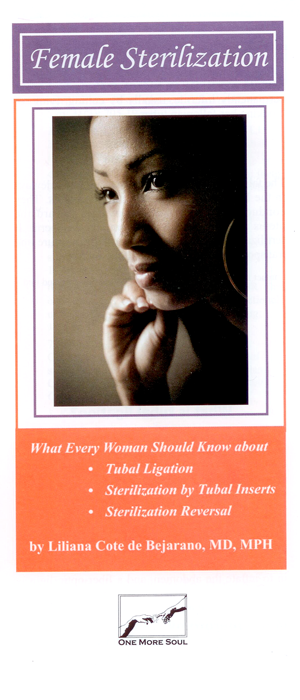
Female Sterilization
What tubal ligation is; the physical, mental and moral consequences that a woman should consider before making the serious decision to become sterile; and what alternatives exist

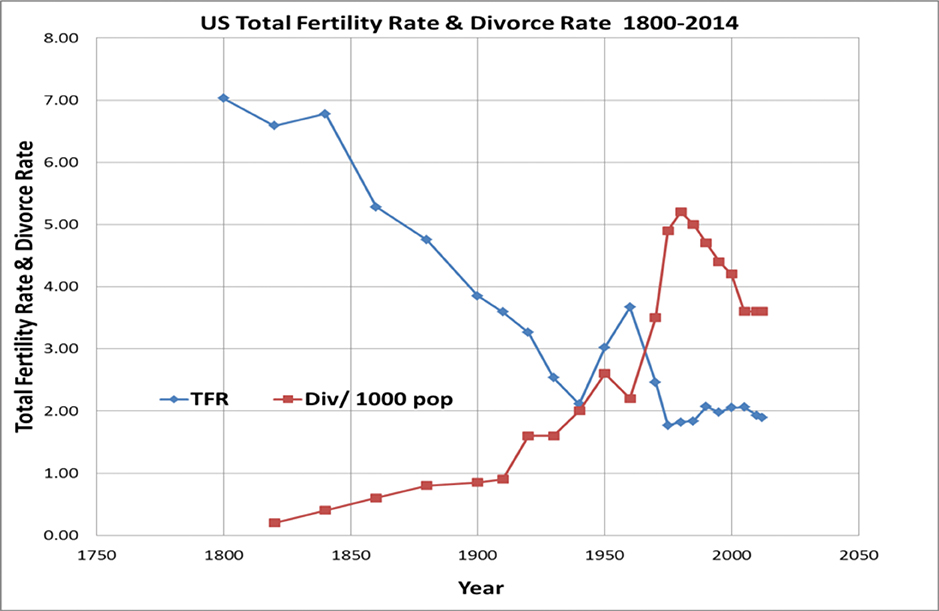



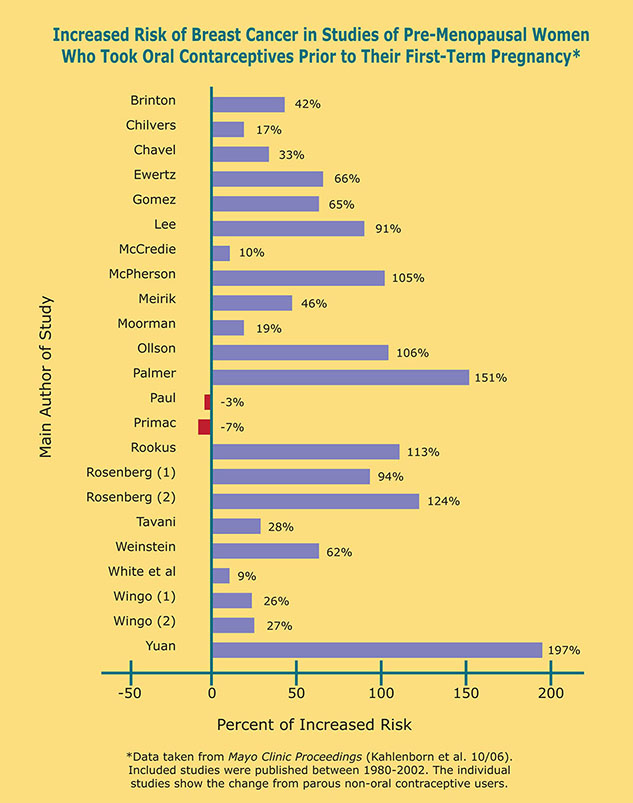
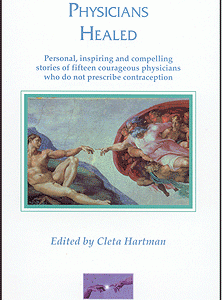
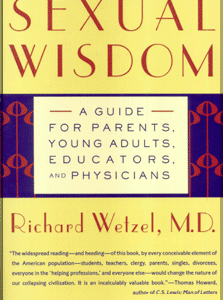

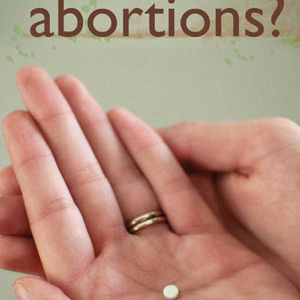


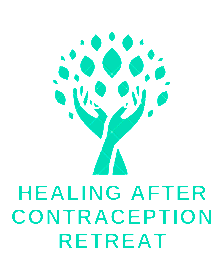
Oral contraceptive pills and long-term metabolic risk
A recent study published in the journal Nutrients found that some types of oral contraceptives may impair the sugar metabolism in healthy women.
The study included 21 healthy and non-obese women between the ages 18-40. The women were using combined monophasic OCP for more than three months. The OCPs contained ethinylestradiol (EE) and the progestin component varied in the androgenic characteristics, some androgenic and others antiandrogenic.
The authors of the study reported markers of blood sugar (glucose, insulin and C-peptide). The markers were evaluated in participants of the study before 60 g glucose drink (fasting) and for 4 hours after drinking the sugar. The measurements were done during the “active” pill phase and once during the “inactive” (hormone-free) pill phase.
Although the fasting blood sugar levels were not affected in androgenic pill users, glucose, insulin, and C peptide responses to an oral glucose bolus were ~100% ~50%, ~44% greater. This intolerance to the sugar was noticeable during the active pill phase compared to the hormonal free or inactive pill phase.
The authors of the study concluded that that androgenic component of the combined oral contraceptive pills formulations may impair glucose tolerance and increase insulin resistance. This rising incidence of these adverse effects on glucose tolerance and insulin resistance contribute to detrimental of metabolic health and is linked to an increased prevalence of cardiometabolic diseases in women. Young women need to be informed of the metabolic risk associated to the use of combined hormonal contraceptives.
Fertility awareness methods and fertility appreciation can help young women to monitor health biomarkers of hormonal and metabolic activity and are healthier and safer alternatives to oral contraceptive pills.
Posted in Articles, News & Commentary | No Comments »